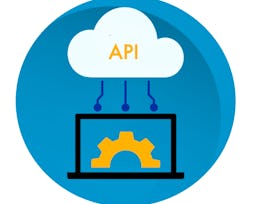In Elicitation: Artifact and Stakeholder Driven Analysis, you will learn to use both recorded and presently unrecorded knowledge in your elicitation techniques. As you get started in finding out about the new product, you must first learn about the product that was (if there was one) and then learn about the system to be. Oftentimes, you'll find yourself in an environment you know nothing about! This course will help you find ways to learn about the domain, the system that was, and the system to be. Please review: "Who this class is for to determine if you are ready to take this graduate level course".



Requirements Elicitation: Artifact and Stakeholder Analysis
This course is part of Requirements Engineering: Secure Software Specifications Specialization

Instructor: Kristen Walcott-Justice
Sponsored by IEM UEM Group
8,399 already enrolled
(118 reviews)
Skills you'll gain
Details to know

Add to your LinkedIn profile
14 assignments
See how employees at top companies are mastering in-demand skills

Build your subject-matter expertise
- Learn new concepts from industry experts
- Gain a foundational understanding of a subject or tool
- Develop job-relevant skills with hands-on projects
- Earn a shareable career certificate


Earn a career certificate
Add this credential to your LinkedIn profile, resume, or CV
Share it on social media and in your performance review

There are 4 modules in this course
One step of gathering domain knowledge and knowledge of the system that was and the system to be is through artifact-driven elicitation. Here we will discuss what artifact-driven elicitation entails, how to go about learning background from the stakeholders, and methods to obtain and deal with the data.
What's included
4 videos5 readings4 assignments1 discussion prompt
As you talk with customers early on, developing storyboards and scenarios help. They are easily communicable to both the customer and later to developers and work in all software development lifecycles. Mockups and prototypes can also be used- CAREFULLY. Here we explain these concepts along with their large benefits and dangers.
What's included
4 videos4 readings3 assignments1 peer review1 discussion prompt
In understanding the system to be and the system that was, existing knowledge of the domain and current scenarios needed are helpful. These can be related back to models. This lesson discusses knowledge that can be obtained, from what resources, and how that can be mapped to existing models for help in further elicitation.
What's included
2 videos3 readings3 assignments1 discussion prompt
Knowledge of the system-as-is and the system-to-be can be obtained through interviews. While the concept of conducting an interview seems easy overall, an efficient and effective interview is challenging to conduct. Here we'll talk about guides to meeting effectiveness and guidelines for conducting a useful interview, specifically for determining what the stakeholder has and needs.
What's included
6 videos5 readings4 assignments1 discussion prompt
Instructor

Offered by
Why people choose Coursera for their career




Learner reviews
118 reviews
- 5 stars
71.18%
- 4 stars
17.79%
- 3 stars
5.08%
- 2 stars
3.38%
- 1 star
2.54%
Showing 3 of 118
Reviewed on Oct 19, 2019
good course for learning more about requirements gathering techniques and stakeholder analysis overvie
Reviewed on Nov 10, 2020
Explains the fundamentals well and offers some techniques and vocabulary that were new to me.
Reviewed on Dec 18, 2022
learn about story board, scenarios, many things to become a business analyst
Recommended if you're interested in Computer Science

University of Leeds

Technion - Israel Institute of Technology

Open new doors with Coursera Plus
Unlimited access to 10,000+ world-class courses, hands-on projects, and job-ready certificate programs - all included in your subscription
Advance your career with an online degree
Earn a degree from world-class universities - 100% online
Join over 3,400 global companies that choose Coursera for Business
Upskill your employees to excel in the digital economy




